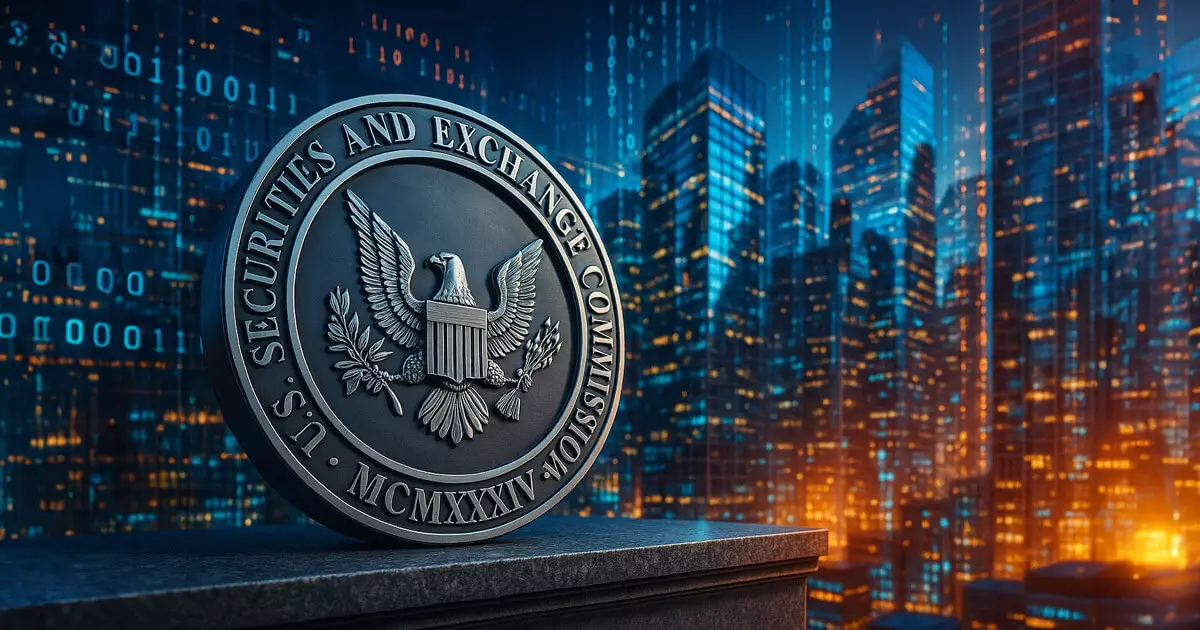The recent surge of attention from the U.S. Securities and Exchange Commission (SEC) towards blockchain technology, particularly concerning tokenized securities, presents a pivotal moment for the future of finance. A series of meetings last week revealed an urgent need for regulatory innovation, with major players like Nasdaq and decentralized entities such as Plume Network advocating for a self-regulatory framework often referred to as a “regulatory sandbox.” This approach can enable the kind of creative disruption that is essential for advancing our financial infrastructures, but it also carries significant risks and must be embraced cautiously.
The Need for a Regulatory Sandbox
At the heart of the discussions among industry players and the SEC lies the concept that innovation should not be stifled by archaic regulations. The term “regulatory sandbox” encapsulates a controlled environment where tokenized assets can be issued and traded without the full burden of traditional securities regulations. This model could potentially allow for experimentation and evolution without endangering investor protections, thereby offering a thoughtful middle ground that acknowledges both modern technological advancements and the foundational principles of the securities market.
Nasdaq’s proposal for a new trading venue tailored to digital assets underscores a growing recognition that the existing framework may not sufficiently serve this emerging class of securities. While maintaining core registration rules, the introduction of an “ATS-Digital” platform could facilitate a more robust marketplace, allowing firms to list digital investment contracts alongside commodity-style tokens. This will promote liquidity, enabling a flourishing ecosystem for both established and nascent financial products.
Concerns Over Investor Protection
However, the suggestion of a regulatory sandbox cannot simply be seen through the lens of opportunity; it also raises legitimate questions about investor protection. The SEC’s historical mandate prioritizes safeguarding investors, and any deviation from this could lead to detrimental effects. Thus, while proponents argue tirelessly for a flexible regulatory approach, we must be vigilant about creating loopholes that could expose retail investors to undue risk.
Commissioner Mark Uyeda’s initial support for the concept is encouraging, yet it is paramount that any measures introduced do not dilute the protections that have historically governed financial markets. National market system safeguards should not be weakened in the process of accommodating new technologies. The equilibrium between innovation and protection is delicate, and each step must be measured.
Decentralization Versus Regulatory Control
The dynamics of decentralized finance (DeFi) present another layer of complexity. Companies like Plume Network argue convincingly that permissionless blockchains are ideal for the tokenization of real-world assets. Yet, this push for “credible neutrality” and safe harbor provisions raises essential questions. Who will ultimately bear responsibility should a tokenized asset fail? The call for a framework that accommodates decentralized operations must also consider the inherent implications of decentralized systems potentially evading appropriate regulatory scrutiny.
Moreover, as industry participants strive for innovation, we must ensure any procedures anchored in the 1933 Securities and 1934 Exchange Acts remain relevant in the context of modern financial products. Issuers should not use blockchain efficiencies as an excuse to sidestep established financial norms. The notion that decentralized protocols should be exempt from traditional transfer agent requirements could undermine the very investor protection those regulations are designed to maintain.
Innovative Infrastructure and Testing
Etherealize and the policy firm MetaLeX have rightly emphasized the importance of back-office infrastructure, highlighting how legacy regulations hamper innovations aimed at optimizing ledger systems. Their call for the SEC to accept decentralized ledgers as legitimate registers of shareholder information is revolutionary yet fraught with peril. An effective pilot program to test these smart contract equivalents for essential corporate actions—like dividend distributions and voting—could prove valuable. However, the efficacy of such a pilot hinges on the decision to maintain investor protections as a non-negotiable tenet.
Accordingly, the SEC must embrace a technology-specific approach that fosters gradual adoption while holding firm on the fundamental principle of safeguarding investors. Phased pilots and modular rulebooks could pave the way for success, but only if they do not erode the investor confidence that underpins our financial systems.
In this moment of transition, it is evident that our financial regulatory landscape is at a crossroads. The push for regulatory sandboxes presents a valid opportunity for innovation, but if not approached with caution, enthusiasm could easily transform into chaos, harming the very stakeholders they aim to protect. Balancing innovation and investor protection will be a defining challenge of this era; the conversation is just beginning.

